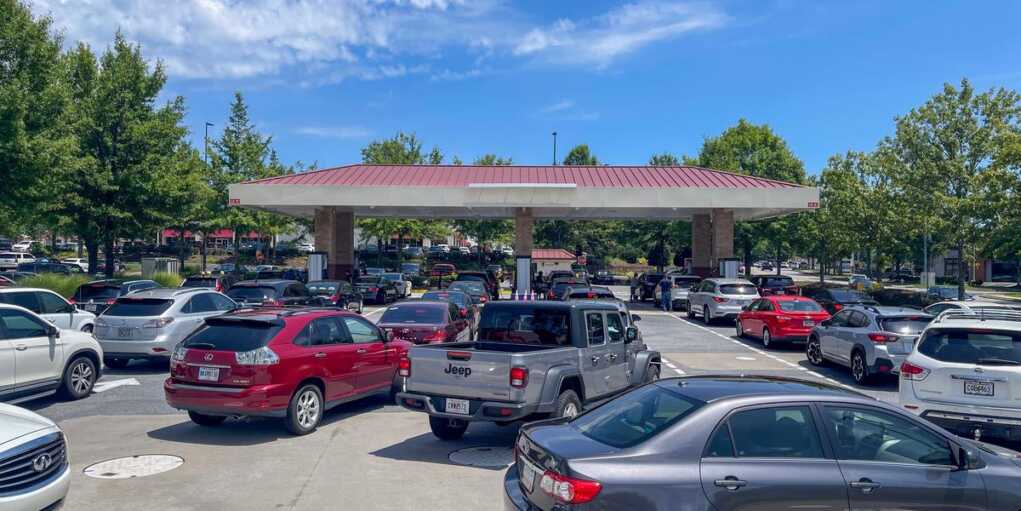Iran’s Latest Threat Sparks Global Panic—Fill Up Your Gas Tank Now

If you haven’t filled up your gas tank lately, now might be the time. With tensions escalating rapidly in the Middle East, energy experts are warning of a potential surge in oil prices that could hit American consumers hard—and fast. The reason? Iran is threatening to shut down the Strait of Hormuz, a narrow but vital corridor through which nearly 20% of the world’s oil supply flows.
This comes after what President Donald Trump hailed as “a spectacular military success,” claiming the U.S. had obliterated Iran’s nuclear enrichment facilities in a swift and targeted strike. While Trump called the operation a move toward peace, analysts warn it may provoke serious retaliation—not only against American assets in the region but also against the global oil supply chain.
The Strait of Hormuz: A Global Chokepoint
The Strait of Hormuz is no ordinary waterway. Sandwiched between Iran and Oman, it serves as the main artery for oil exports from Saudi Arabia, Iraq, Kuwait, and the UAE. According to the U.S. Energy Information Administration, nearly one-fifth of the world’s daily oil production passes through this strategic chokepoint. Any disruption, even temporary, would send shockwaves through energy markets.
Iran’s parliament has reportedly backed a motion to close the Strait, warning of consequences if the West continues its aggression. Whether Iran can enforce that threat remains to be seen, but the very suggestion is enough to rattle markets and consumers alike.
Energy analyst Saul Kavonic told Reuters that Iran may lash out not just at the U.S., but also at Gulf oil infrastructure in Iraq or Saudi Arabia, or step up harassment of shipping vessels passing through the strait. Either move would drive up prices—and uncertainty.
What This Means for Americans
Oil is a fungible commodity, traded globally. That means a disruption anywhere drives prices up everywhere. U.S. domestic production can help buffer the shock, but not completely. And while Trump’s “drill, baby, drill” policies are back in full swing, most new wells and pipelines won’t come online for months.
“Top off your tanks now,” advises RedState’s Ward Clark. “Even the threat of conflict is enough to cause a short-term spike in prices.” Clark noted he just filled up both his trucks, including a 32-gallon tank in his F-350, in anticipation of what may come.
With inflation already straining household budgets, a fuel price spike could trigger new headaches for the average American—and more economic volatility in an already unpredictable year.
The Bigger Picture: Peace or Escalation?
Despite Trump’s post-strike optimism, the region remains on edge. Iranian leadership, bloodied but defiant, isn’t backing down. While some observers believe the regime is weakened, Clark argues real change will only come when the Iranian people rise up and dismantle their theocratic rulers from within.
Meanwhile, the U.S. Navy has repositioned forces in the Gulf to counter threats from Iran and its proxy militias, including the Houthis in Yemen. But securing the Strait of Hormuz and maintaining the free flow of oil could require a more sustained presence—and possibly more conflict.
Vice President JD Vance attempted to cool tensions by stating, “We actually want peace.” But that peace may be elusive if Tehran views U.S. action as a declaration of war rather than a negotiation tactic.
Brace for Impact
In short, the world just entered a new phase of Middle East volatility. Oil markets are on edge, Iran is defiant, and the U.S. is asserting dominance with its military might. For Americans back home, the immediate takeaway is simple: gas prices are about to spike.
If the Strait of Hormuz closes—even briefly—it won’t just be an international crisis. It’ll hit your wallet at the pump. As Clark bluntly put it: “We have an interesting few weeks ahead.”









